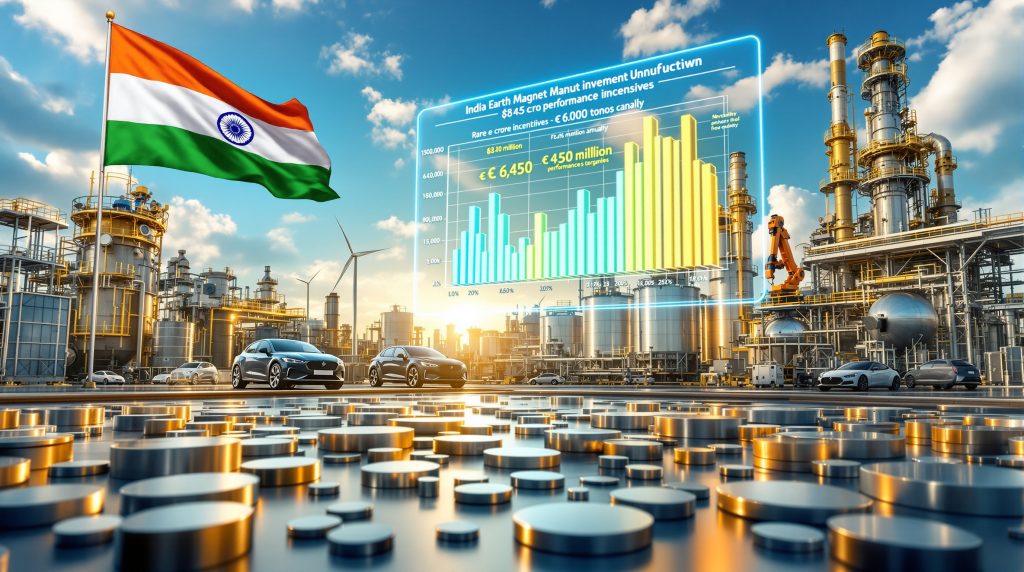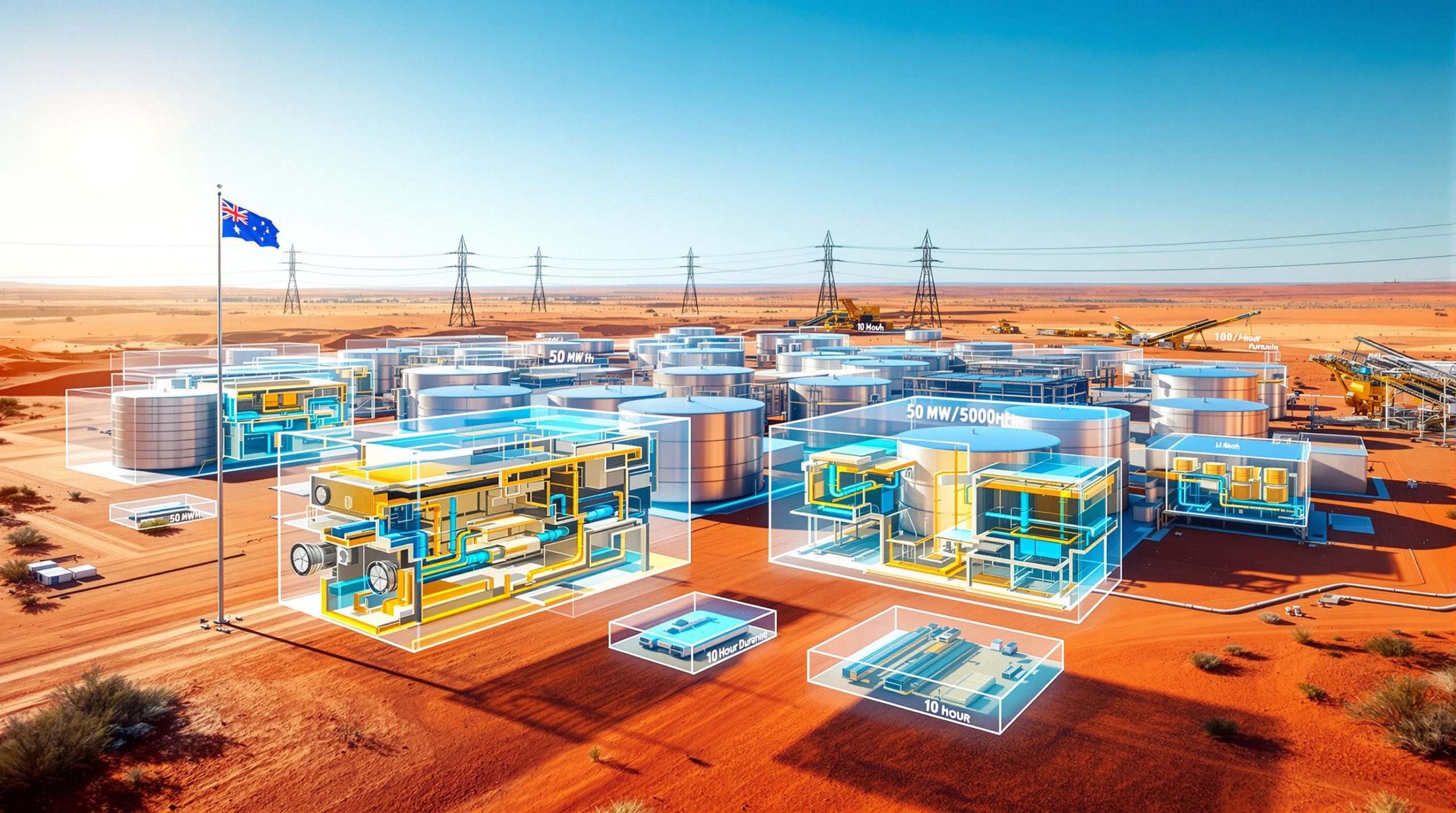India's comprehensive approach to critical materials manufacturing faces unprecedented transformation pressures driven by technological convergence, supply chain vulnerability recognition, and strategic resource competition. The India rare earth magnets scheme represents a calculated response to evolving energy transition security requirements across strategic technology sectors. Traditional procurement models that prioritised cost efficiency over supply security have given way to integrated policy frameworks emphasising domestic capability development and strategic autonomy.
The global transition toward electrification, renewable energy infrastructure, and advanced electronics has fundamentally altered demand patterns for specialised magnetic materials. Countries with substantial domestic markets but limited manufacturing capabilities now face strategic decisions about building indigenous production capacity versus maintaining import dependency on concentrated supply sources.
Understanding India's Strategic Pivot in Critical Minerals Manufacturing
India's comprehensive rare earth permanent magnet manufacturing initiative represents a calculated response to critical supply chain vulnerabilities that have emerged across strategic technology sectors. The government approved Rs 72.8 billion ($815 million) scheme on 26 November 2025, establishing a framework for 6,000 metric tons per annum production capacity across five manufacturing facilities.
The financial structure demonstrates sophisticated risk-sharing between public investment and private sector participation. Performance-linked incentives totalling Rs 64.5 billion over five years align government support with actual production achievements rather than capacity establishment alone. Capital subsidies of Rs 7.5 billion provide essential startup support for facility establishment, while Rs 0.8 billion allocated for administrative systems ensures effective monitoring and implementation.
Furthermore, this initiative aligns with India's broader critical minerals strategy developments occurring globally. According to the Press Information Bureau, the scheme specifically targets complete value chain integration, addressing critical gaps from rare earth oxide processing through finished magnet manufacturing.
Key Implementation Parameters:
- Total program duration: Seven years including two-year setup period
- Maximum capacity per company: 1,200 metric tons annually
- Competitive selection process: Open bidding for five manufacturing slots
- Technology transfer requirements: Advanced processing method acquisition mandated
- Production timeline: Commercial operations expected by 2027-2028
India currently possesses approximately 6.9 million tons of rare earth reserves, representing roughly 7% of global reserves, yet maintains heavy import dependence for processed materials and finished magnets due to manufacturing capability gaps.
What Are Rare Earth Permanent Magnets and Why Do They Matter?
Rare earth permanent magnets constitute essential components enabling high-performance applications across multiple strategic industries. These specialised materials provide exceptional magnetic properties that alternative technologies cannot currently replicate at comparable performance levels or economic viability.
The primary composition combines rare earth elements (neodymium, praseodymium, dysprosium, terbium) with iron and boron, creating neodymium-iron-boron (NdFeB) magnets with superior strength-to-weight ratios and temperature stability characteristics.
Technical Performance Specifications:
| Property | Range | Significance |
|---|---|---|
| Energy Product (BH)max | 40-52 MGOe | Magnetic strength measurement |
| Curie Temperature | 310-400°C | Operating temperature limit |
| Coercivity | 10-14 kOe | Resistance to demagnetisation |
| Density | 7.4-7.6 g/cm³ | Weight optimisation factor |
Manufacturing complexity requires precise control across multiple processing stages. Alloy preparation through vacuum induction melting, powder production via hydrogen decrepitation, compaction under high magnetic fields, sintering at 1,050-1,100°C, and specialised coating applications for corrosion resistance demand sophisticated equipment and technical expertise.
Critical Application Sectors:
- Electric vehicles: 1.0-1.5 kg per vehicle motor assembly
- Wind turbines: 200-600 kg per MW capacity for direct-drive systems
- Consumer electronics: Speakers, hard drives, smartphone components
- Defence systems: Guidance equipment, radar assemblies
- Industrial automation: Robotics, precision machinery
Global electric vehicle production reached 13.6 million vehicles in 2024, generating rare earth magnet demand of approximately 16,320-20,400 metric tons annually. Wind turbine installations require substantial magnet quantities, with 15 MW offshore turbines utilising 600-900 kg of rare earth magnet material per unit.
In addition, the strategic criticality extends beyond commercial applications into defence and aerospace domains where performance specifications require materials meeting stringent standards unavailable through substitution pathways. Modern military systems increasingly depend on rare earth magnet-enabled technologies for guidance, communication, and weapons systems.
How Does India's Policy Framework Address Supply Chain Vulnerabilities?
The scheme directly confronts three distinct vulnerability categories that have constrained India's advanced manufacturing capabilities. Supply concentration risks, processing capability gaps, and technology acquisition barriers receive targeted policy interventions through integrated financial and regulatory mechanisms.
Current industrial capacity gaps necessitate comprehensive infrastructure development across critical processing stages. The mining evolution trends demonstrate how nations are adapting to these strategic challenges.
| Processing Stage | Current Status | Development Requirement |
|---|---|---|
| Rare Earth Oxide Production | Limited monazite processing | Expanded capacity and purity standards |
| Metal Conversion | Virtually absent | Chlorination and reduction facilities |
| Alloy Production | Minimal capability | Vacuum induction melting systems |
| Magnet Manufacturing | No commercial production | Complete fabrication infrastructure |
International benchmarks suggest REPM manufacturing facilities require substantial capital investment. Typical 1,200 metric ton annual capacity facilities demand $80-150 million total investment including land preparation, sintering furnaces, pressing equipment, and ancillary systems.
The Rs 7.5 billion capital subsidy represents 15-25% of estimated facility costs, consistent with global strategic manufacturing support norms. Performance-linked incentives create accountability mechanisms ensuring government investment generates actual production capacity rather than speculative projects.
Competitive Bidding Framework:
- Global participation: International companies eligible for selection
- Technology transfer: Advanced processing method sharing required
- Performance accountability: Production milestones tied to incentive payments
- Quality standards: International specifications mandated for output
The policy framework acknowledges that domestic reserve possession alone provides insufficient competitive advantage without integrated downstream processing capabilities. Each selected company receives maximum 1,200 metric ton annual allocation, ensuring distributed production capacity rather than concentrated facilities.
What Are the Geopolitical Implications of India's Rare Earth Strategy?
Global rare earth permanent magnet production remains heavily concentrated, with China controlling 85-95% of manufacturing capacity. This concentration creates systemic vulnerabilities for technology-dependent economies and strategic supply chain weaponisation potential during geopolitical tensions.
Historical precedent demonstrates the strategic leverage that supply concentration enables. China's 2010-2015 export restriction period reduced quotas by 37%, triggering price volatility exceeding 300% for certain rare earth materials. Dysprosium oxide prices increased from $8/kg in 2009 to $60-80/kg in 2011, while neodymium oxide rose from $5/kg to $50-60/kg during the same period.
However, recent developments show countries responding to these vulnerabilities. The executive order on minerals demonstrates how governments are prioritising strategic materials security.
Regional Supply Chain Diversification Impact:
India's production capacity creates alternative supply pathways for South Asian, Southeast Asian, and broader Indo-Pacific technology sectors. Regional electric vehicle market growth projected at 15-20% annually through 2030, combined with ASEAN renewable energy targets exceeding 80 GW wind capacity, generates substantial regional demand for reliable magnet supplies.
The initiative aligns with Quad alliance supply chain resilience discussions where Australia, India, Japan, and the United States coordinate critical minerals strategies to reduce dependence on concentrated supply sources. This multilateral approach recognises that individual nations cannot independently address supply chain vulnerabilities in strategic materials sectors.
Strategic Autonomy Framework Benefits:
- Supply security: Reduced exposure to export control mechanisms
- Price stability: Alternative sourcing reduces price manipulation vulnerability
- Technology development: Domestic capabilities enable innovation and adaptation
- Regional influence: Supply partnerships extend strategic relationships
Current supply chain risk indicators include 18-24 month lead times for rare earth magnet orders and single-source dependency for 60%+ of global demand. Geographic concentration creates vulnerability to natural disasters, industrial accidents, or geopolitical escalation affecting production centres.
How Will This Initiative Impact Global Rare Earth Market Dynamics?
India's planned 6,000 metric tons annual production represents 2.4-3.0% of projected global demand by 2030, positioned strategically during anticipated demand growth acceleration. The production timeline aligns with electric vehicle market expansion and renewable energy capacity additions requiring substantial rare earth magnet quantities.
Global electric vehicle sales projections indicate 20-25 million vehicles annually by 2028, compared to 15-16 million in 2025. This 40-50% growth generates proportional rare earth magnet demand increases, creating market opportunities for new production capacity.
Furthermore, wind energy sector expansion drives additional demand through capacity additions. Global wind installations averaged 120-130 GW annually in 2025, projected to reach 150-180 GW by 2030. Direct-drive wind turbines require 200-600 kg of rare earth magnets per MW capacity, translating to 200,000-250,000 metric tons annual demand by 2030.
| Time Period | India's Production Impact | Global Market Effect |
|---|---|---|
| 2025-2027 | Setup and initial testing | Minimal immediate supply |
| 2028-2030 | Full capacity operations | 3-5% global supply addition |
| 2030-2035 | Potential expansion phase | Significant market diversification |
According to The Hindu, India's domestic consumption is expected to double between 2025 and 2030, providing substantial local demand for new production capacity. This domestic market foundation reduces export dependency and provides stable demand during global market fluctuations.
The initiative's success could encourage similar programs in other countries with rare earth reserves but limited processing capabilities. Brazil, South Africa, and Vietnam possess substantial rare earth resources and might develop comparable manufacturing schemes if India demonstrates economic viability.
What Challenges Must India Overcome for Successful Implementation?
Several technical and economic barriers require strategic solutions to ensure the scheme's effectiveness and global market competitiveness. Resource quality, processing complexity, and supply chain integration present implementation challenges that policy frameworks must address.
India's rare earth deposits present lower grades and more complex mineralogy compared to established production regions. Monazite-based resources require additional processing steps and generate radioactive waste requiring specialised handling capabilities.
Beach sand mineral processing currently provides limited rare earth oxide production through Indian Rare Earths Limited operations. Scaling this capacity to support 6,000 metric tons annual magnet production requires substantial infrastructure investments and technical capability development.
Supply Chain Integration Gaps:
Current manufacturing ecosystem lacks critical components necessary for integrated rare earth magnet production:
- Metal reduction facilities: Chlorination and electrolytic processing capabilities absent
- Alloy preparation systems: Vacuum induction melting and composition control equipment
- Magnet fabrication infrastructure: Pressing, sintering, and coating technologies
- Quality control systems: Testing and certification capabilities for international standards
Rare earth magnet manufacturing demands specialised knowledge in metallurgy, materials science, and precision engineering. India's current technical workforce requires training programmes and technology transfer initiatives to develop necessary competencies.
Consequently, international partnerships with established magnet manufacturers provide pathways for knowledge acquisition, but technology transfer negotiations require careful balance between access and intellectual property protection.
Environmental and Regulatory Compliance:
Rare earth processing generates environmental challenges including radioactive waste management, chemical handling requirements, and emission control systems. Regulatory frameworks must establish clear guidelines while ensuring industrial competitiveness.
Capital intensity requirements average $80-150 million per 1,200 metric ton facility, demanding significant private sector investment beyond government subsidy support. Access to long-term financing and risk management mechanisms becomes critical for project success.
How Does This Policy Align with India's Broader Economic Objectives?
The rare earth magnet scheme integrates with multiple national policy frameworks, creating synergies across strategic economic development priorities. Atmanirbhar Bharat (Self-Reliant India), Make in India manufacturing initiatives, and Net Zero 2070 commitments receive reinforcement through critical materials manufacturing capabilities.
Electric vehicle ecosystem development requires reliable access to motor components, with rare earth magnets representing critical enabling technology. Domestic magnet production supports EV manufacturing cost competitiveness and reduces import dependency for strategic transportation sector transformation.
Moreover, India's renewable energy targets include 175 GW capacity by 2030, with substantial wind power contributions requiring permanent magnet generators. Local magnet supply reduces project costs and eliminates supply chain risks that could delay renewable energy infrastructure development.
Defence manufacturing modernisation emphasises indigenous production capabilities for strategic systems. Rare earth magnets enable guidance systems, radar equipment, and communication technologies essential for military modernisation programmes.
Export Competitiveness Development:
Value-added rare earth magnet exports create opportunities for high-technology sector development and foreign exchange earnings. Regional demand growth in Southeast Asia and Middle East markets provides export opportunities for Indian manufacturers.
The scheme supports broader industrial ecosystem development through backward and forward linkages. Component suppliers, equipment manufacturers, and downstream users benefit from domestic rare earth magnet availability and technical capability development.
Employment and Skills Development:
Rare earth magnet manufacturing creates high-skilled employment opportunities in metallurgy, materials engineering, and precision manufacturing. Training programmes and technical education initiatives develop specialised workforce capabilities supporting broader advanced manufacturing objectives.
Research and development activities associated with magnet manufacturing contribute to India's innovation ecosystem and technological capability enhancement across materials science and engineering disciplines.
What Investment Opportunities Emerge from This Initiative?
The comprehensive scheme creates multiple investment pathways across the rare earth value chain, from upstream processing through downstream application development. Both domestic and international investors can participate in various capacity development segments.
Five manufacturing slots available through competitive bidding present opportunities for established magnet manufacturers and financial investors seeking strategic materials sector exposure. Maximum 1,200 metric ton annual capacity allocation per company ensures multiple participation opportunities.
International companies with advanced technology can leverage India's cost advantages while accessing growing domestic and regional markets. Technology transfer requirements create partnerships between global leaders and domestic industrial capabilities.
Ancillary Industry Development:
Supporting infrastructure requirements create investment opportunities in specialised equipment manufacturing, chemical processing, and environmental management systems:
- Processing equipment: Furnace manufacturers, powder processing systems
- Chemical supplies: Specialty chemicals and processing materials
- Environmental systems: Waste management and emission control technologies
- Quality control: Testing equipment and certification services
Downstream Application Sectors:
Reliable domestic magnet supply enables investment in magnet-dependent manufacturing sectors including electric motor production, generator manufacturing, and precision instruments. Automotive suppliers and renewable energy equipment manufacturers benefit from supply chain integration opportunities.
Project financing, insurance services, and risk management products support rare earth magnet manufacturing development. Infrastructure investment in power supply, transportation, and waste management facilities enables industrial cluster development.
How Will Success Be Measured and Monitored?
The policy framework establishes comprehensive performance metrics and monitoring mechanisms ensuring effective implementation and return on government investment. Regular assessment procedures track production achievements, economic impacts, and strategic objectives fulfilment.
| Metric Category | Target Achievement | Assessment Frequency |
|---|---|---|
| Production Capacity | 6,000 MTPA by 2030 | Quarterly monitoring |
| Quality Standards | International certification | Continuous verification |
| Employment Creation | 10,000+ direct positions | Bi-annual surveys |
| Export Development | $200 million annually by 2035 | Annual trade analysis |
| Import Substitution | 50% reduction by 2032 | Supply chain tracking |
Technology transfer effectiveness requires evaluation of knowledge acquisition, skill development, and innovation capability enhancement. Periodic assessments measure domestic technical capability advancement and industrial ecosystem maturity.
Supply chain resilience improvements receive monitoring through vulnerability reduction metrics, alternative sourcing capability, and crisis response readiness. Regional supply partnership development contributes to broader strategic autonomy objectives.
Financial Performance Monitoring:
Performance-linked incentive disbursement tied to production milestones creates accountability mechanisms ensuring government investment generates tangible results. Regular financial audits and cost-effectiveness analysis maintain fiscal responsibility.
Return on investment calculations consider direct economic benefits, strategic value creation, and indirect industrial development impacts. Comprehensive cost-benefit analysis guides policy adjustments and expansion decisions.
What Are the Long-Term Strategic Implications?
India's rare earth magnet initiative extends beyond industrial policy implementation to fundamental strategic positioning in global technology supply chains. Success establishes India as a reliable alternative supplier for critical materials while demonstrating policy frameworks for strategic autonomy development.
Domestic manufacturing capability positions India as a technology and supply chain hub for South Asian and Indo-Pacific markets. Regional partnerships through supply agreements and technology sharing extend India's strategic influence through economic integration.
The initiative potentially catalyses broader critical minerals cooperation frameworks with allied nations seeking supply chain diversification. Australia's rare earth mining capabilities combined with India's processing and manufacturing capacity creates complementary partnership opportunities.
Industrial Ecosystem Evolution:
Successful rare earth magnet manufacturing enables downstream technology sector development in electric vehicles, renewable energy, and advanced electronics. Industrial clustering effects create innovation hubs and attract international investment in related technologies.
Technical capabilities developed through magnet manufacturing transfer to other advanced materials sectors including specialty alloys, electronic materials, and precision components. This technology spillover effect enhances broader industrial competitiveness.
Policy Framework Replication:
The scheme's structure provides a model for other strategic materials sectors requiring domestic capability development. Successful implementation demonstrates integrated policy approaches combining financial incentives, technology transfer, and performance accountability.
In addition, the global resources expo highlights how international collaboration can accelerate these strategic initiatives.
Other countries with similar strategic vulnerabilities may adopt comparable frameworks, potentially creating global supply chain diversification trends that reduce concentration risks across multiple critical materials sectors.
Geopolitical Rebalancing Effects:
Reduced dependence on concentrated supply sources strengthens India's strategic autonomy and negotiating position in international relations. Alternative supply capacity provides leverage in trade relationships and reduces vulnerability to economic coercion.
The initiative contributes to broader Indo-Pacific supply chain resilience initiatives and demonstrates commitment to reducing authoritarian leverage over critical technology sectors. Success encourages allied nations to develop similar capabilities and strengthen collective supply chain security.
India's India rare earth magnets scheme represents a comprehensive approach to transforming strategic vulnerabilities into competitive advantages. The initiative's success depends on effective implementation, technological advancement, and integration with broader industrial development strategies, potentially establishing India as a key player in global critical materials markets while supporting domestic technological advancement across multiple strategic sectors.
Are You Looking to Capitalise on Critical Minerals Investment Opportunities?
Discovery Alert's proprietary Discovery IQ model delivers real-time alerts on significant ASX mineral discoveries, including rare earth and critical minerals projects that could benefit from India's massive $815 million strategic initiative. Explore Discovery Alert's dedicated discoveries page to understand why historic discoveries have generated exceptional returns for early investors, then begin your 30-day free trial to position yourself ahead of the market for the next breakthrough discovery.




